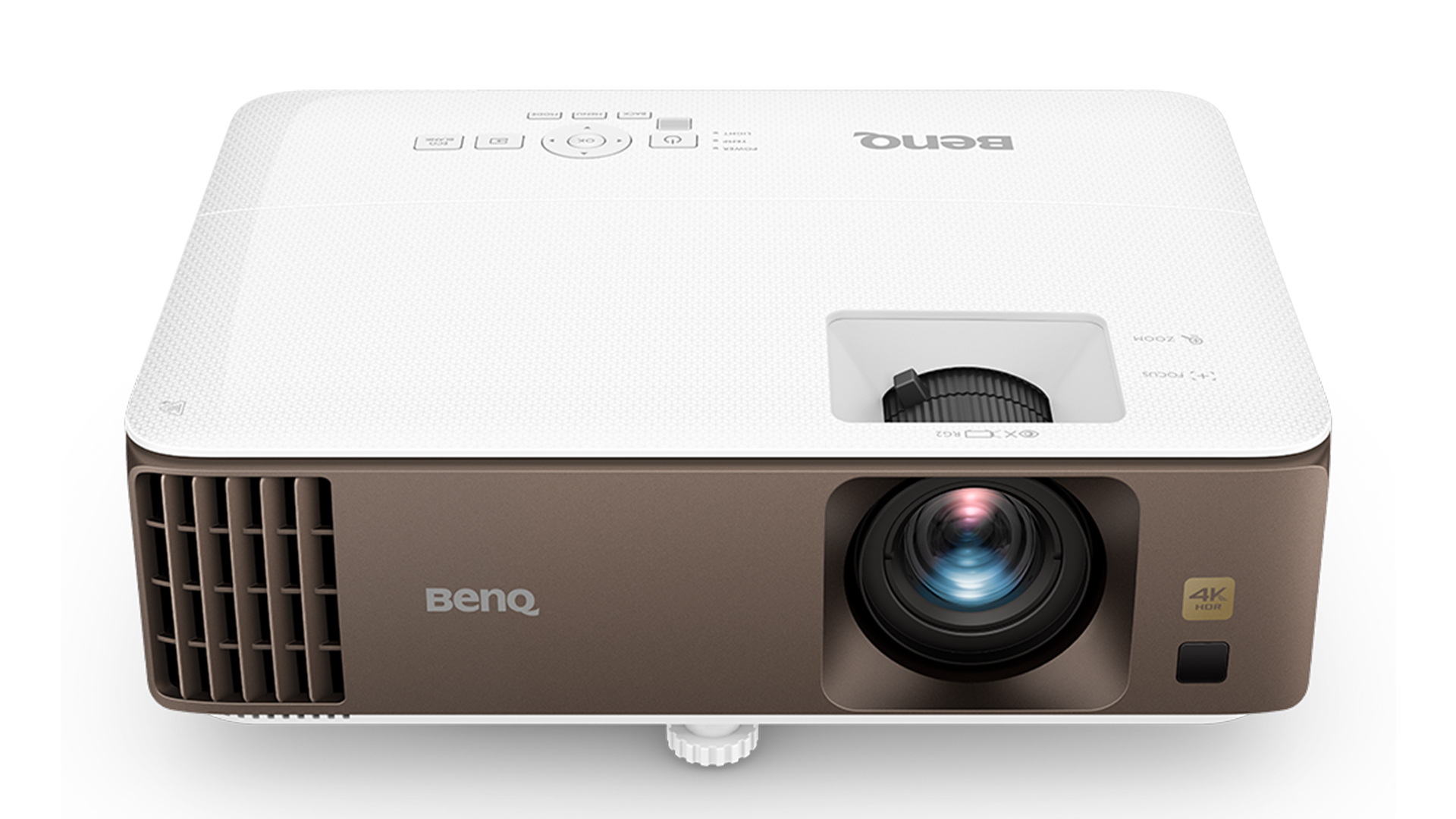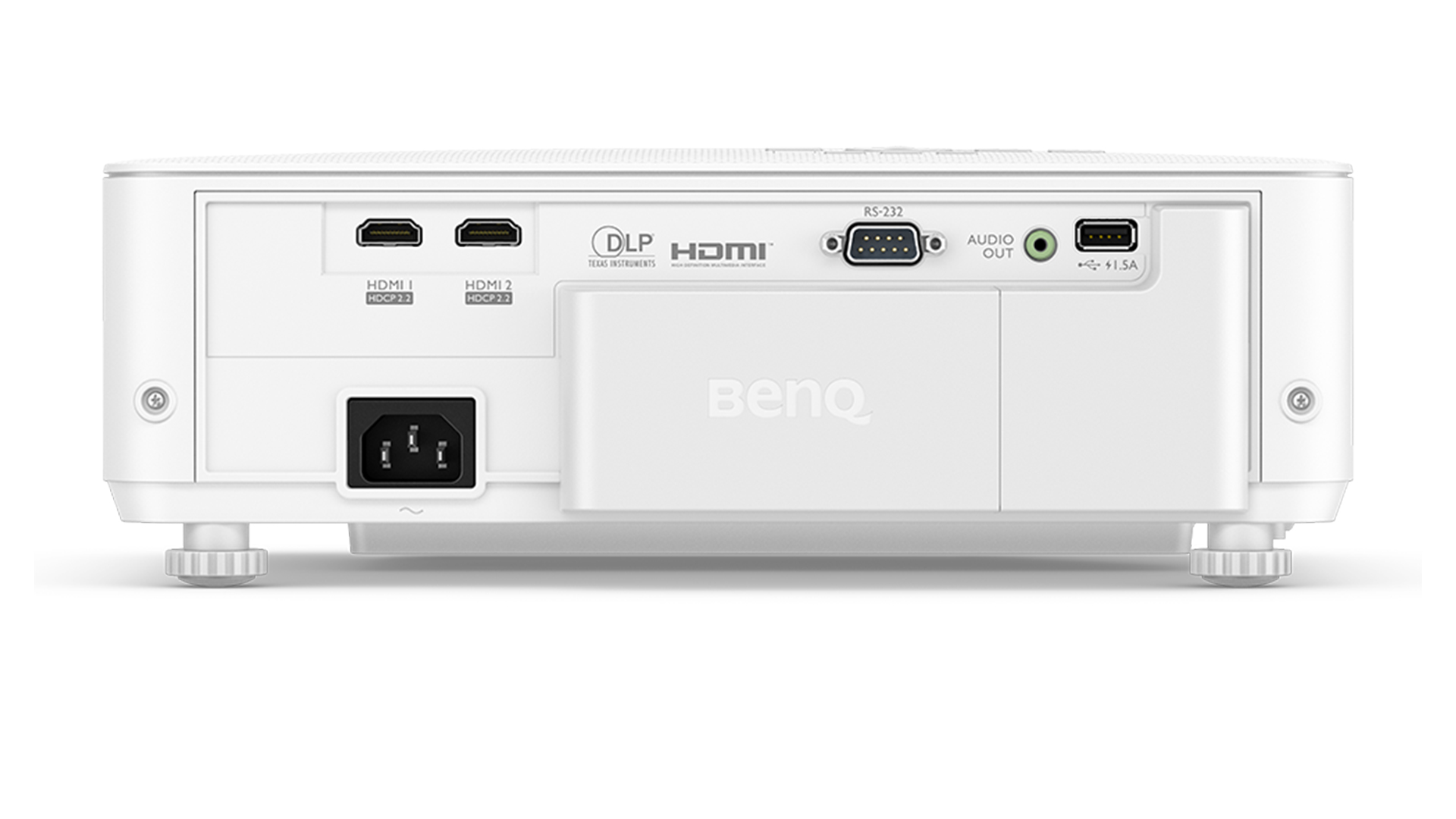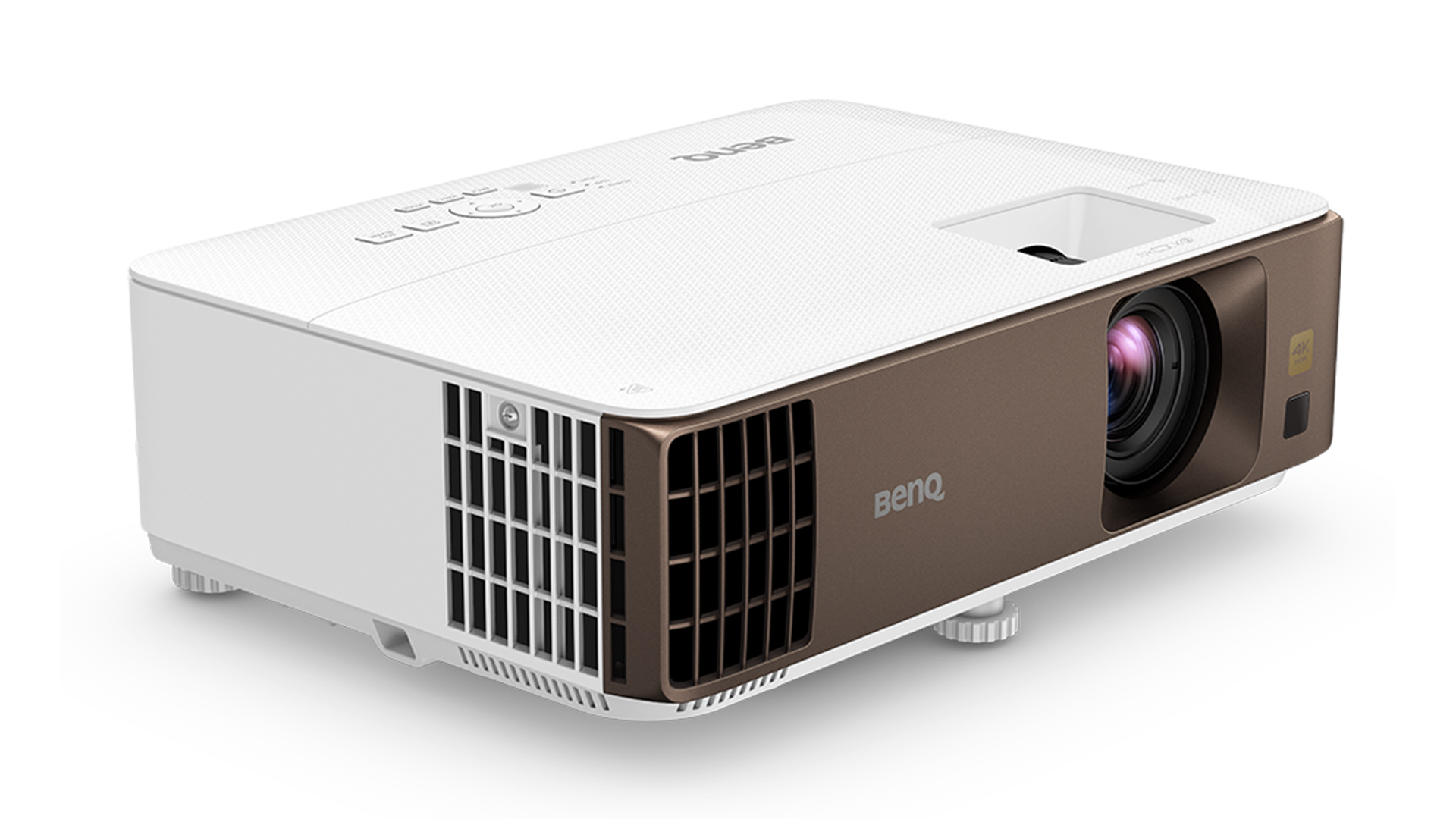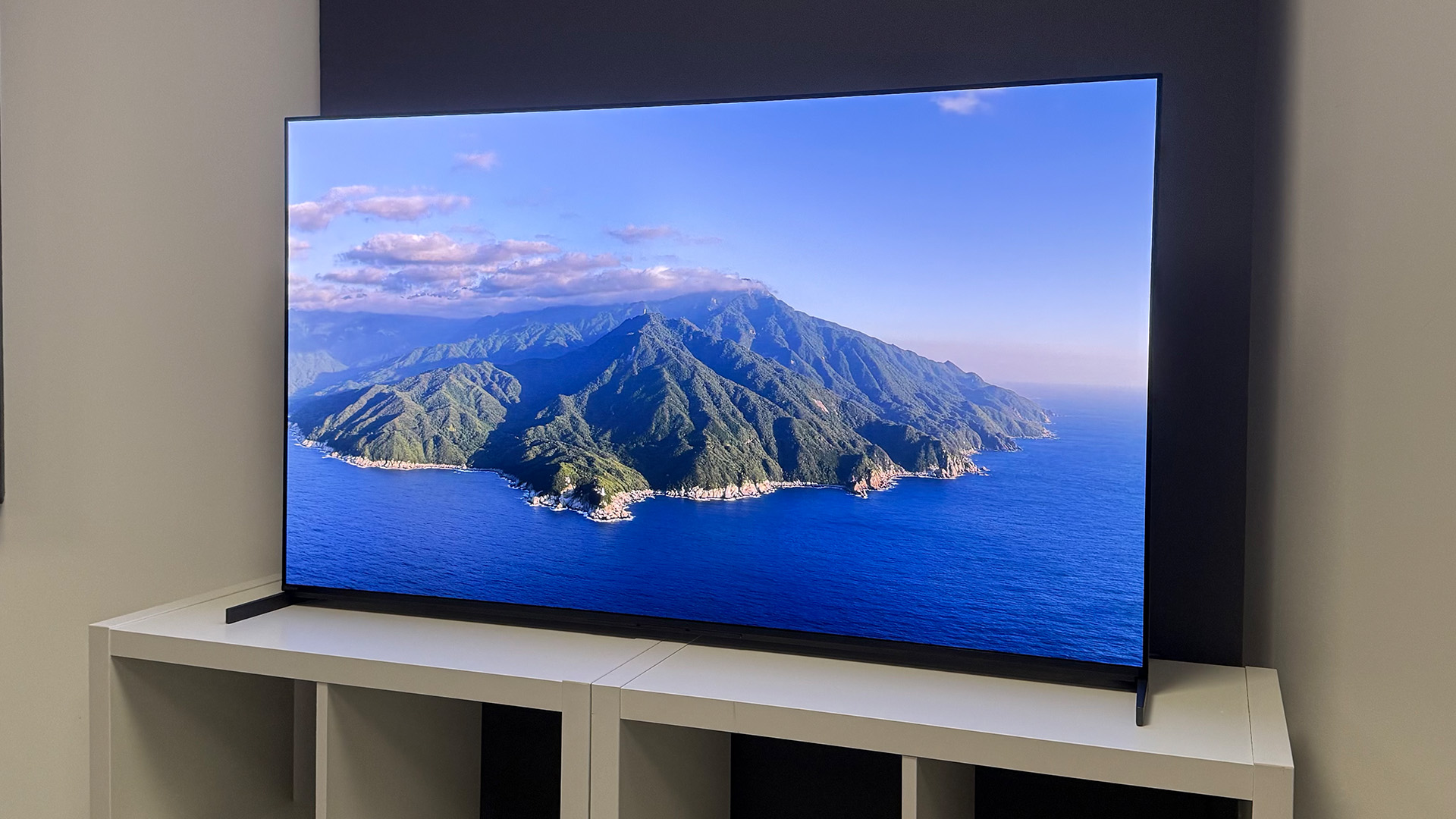What Hi-Fi? Verdict
While it’s no slouch for gaming, the W1800 truly excels at what it was specifically designed for: bringing Hollywood home
Pros
- +
Impressively cinematic pictures
- +
Small, living room-friendly design
- +
Great value for what’s on offer
Cons
- -
Very basic built-in audio
- -
Slight rainbow effect
- -
Black levels could be better
Why you can trust What Hi-Fi?
BenQ divides its consumer projector range into quite specific categories these days. There's premium ‘CinePro’, mid-range ‘CinePrime’ and entry level ‘CineHome’ home cinema models, as well as more general purpose (usually brighter and more affordable) home entertainment models, laser TV models, and dedicated gaming projectors.
The W1800 sits squarely in BenQ’s CineHome section, where its focus on serving up a cinematic experience on a budget serves it extremely well.
Price
The BenQ W1800’s £1099 (around $1379 / AU$1915) launch price looks like good value for a projector that boasts not only 4K and high dynamic range support, but a number of other specific video features that point towards a superior home cinema performance.
The W1800 is not at the time of writing available in the US or Australia, even under a different model number. Experience suggests it will likely appear in both territories at some point, though, as there’s nothing exclusively British or European about it.
You can also buy a ‘W1800i’ version that adds wi-fi and an Android TV smart system support for £1299 (around $1630 / AU$2264). We’ve opted to focus on the W1800, though, as we suspect that for most of our readers this will likely be the better all-round option. Plus you can buy a streaming stick to the W1800 for much less than the W1800i's extra outlay if you do want to add smart capability at some point.
Design

The W1800 is small enough to sit on any coffee table, and its combination of a glossy white finish for most of its sides and a goldy brown front panel gives it an attractive, domesticated look.
Grilles down the side and on the front left corner allow heat (but not light) out from the W1800’s optics, with the lens sitting towards the right hand front. A section cut out of the top edge provides access to simple zoom and focus wheels around the lens, and there are screw-down feet to front and rear to help angle the image to where you need it to be.
The latest hi-fi, home cinema and tech news, reviews, buying advice and deals, direct to your inbox.
The W1800’s top panel features a selection of control buttons for when you can’t find the supplied remote control, and that remote control is impressively tactile and ergonomic, boasting backlit buttons to aid use in the sort of dark room the projector will ideally find itself in.
Features

The BenQ W1800 sets out its home cinema stall in a number of key ways. For starters, it claims to be a 4K projector, and can support both of the HDR10 and HLG HDR formats. There’s no Dolby Vision or HDR10+ ‘active’ HDR support, but projectors that support those premium HDR flavours are currently as rare as the proverbial hen’s teeth.
The claimed 4K support is controversial in the sense that, as with all such affordable ‘4K’ projectors that use DLP optical technology, the BenQ W1800 doesn’t actually carry a native 3840x2160 number of digital mirror devices (DMDs) on its 0.47-inch chip. Instead it draws on the amazing speed with which DLP’s mirrors can respond to get them to deliver essentially multiple pixels of picture information within a single frame.
BenQ describes its approach as ‘true’ 4K, though, and crucially the independent Consumer Technology Association (CTA) in the US agrees.
The W1800 also deploys BenQ’s CinematicColor technology, which encapsulates a number of technical features devoted to delivering a more movie-friendly picture. This includes tweaks to BenQ’s light source technology, a specially coated RGBRGB colour wheel, heat resistant matte paint in the optical structure, an optical path that claims to prevent any light leakage, factory calibrations of every unit that rolls off the production line, and the ability of the resulting light engine to deliver a full 100 per cent of the standard dynamic range Rec 709 colour gamut.

Projector type DLP with lamp lighting
Processing Motion processing
Screen size 60-200 inches
Native resolution 3840x2160 (via double flashing)
Input in game mode 17.5ms
Dimensions (hwd) 11 x 31 x 25cm
While many BenQ projectors sport CinematicColor technology, the W1800 adds another video-facing feature that we haven’t seen from a BenQ projector before: Filmmaker Mode. Developed by the Ultra HD Alliance, an industry body comprising a broad church of content creators and consumer electronics companies, the Filmmaker Mode picture preset is designed to deliver images that resemble as closely as a device can manage the video standards used by the creative industries when they master their content. Filmmaker mode is quite common on TVs now, but it’s still rare in the projector world. What’s more, potentially controversially, the W1800 actually defaults to the Filmmaker Mode whenever it receives an HDR image, and then won’t let you switch to any other preset.
Contrast is claimed to be an impressive-looking 10,000:1 (delivered using dynamic light output adjustment features), while brightness tops out at a claimed 2000 ANSI Lumens. This isn’t especially bright by today’s living room projector standards, but actually we don’t mind that on a projector that’s self-consciously focused on home cinema rather than a more general home entertainment experience. Too much brightness from affordable projectors can often contribute to disappointing contrast and black levels in the sort of dark rooms in which home cinema fans like to watch films.
The W1800 supports a 1.3x level of optical zoom, and can deliver a 100-inch image from a throw distance of 2.5m/8.2ft. There’s no optical image shifting, sadly, leaving you having to fall back on digital keystone correction to get the sides of the image perpendicular if you have to project at a steep vertical angle to get images in the right place. This tends to have a slightly detrimental effect on picture quality.
Connections include two HDMIs, one USB port, a 3.5mm audio output, and an RS-232 port for integrating the projector into a wider system. The HDMIs are, unsurprisingly, built to the 2.0 specification, so there’s no support for variable refresh rates or 4K/120Hz gaming feeds. Gamers haven’t been forgotten, though, as there’s a Fast Response mode that reduces the time the projector takes to render images to a very respectable 17.5ms.
As noted earlier, the W1800 supports an optional extra Android TV dongle if you want it to go ‘smart’, and finally lamp life is claimed at an impressively long 15,000 hours. This will greatly reduce, though, if you watch a lot of HDR.
Die-hard 3D fans, finally, will be pleased to hear that the W1800 supports it using the full HD active shutter system. Though no compatible 3D glasses are included in the price.
Picture

The BenQ W1800’s pictures immediately struck us as genuinely cinematic as soon as we clapped eyes on them – and while deeper scrutiny uncovers a limitation or two, our first impressions hold well throughout our time with the W1800.
The single most striking strength of the W1800 is its colour performance. Whether you’re watching in one of the movie-friendly standard dynamic range picture presets or the Filmmaker Mode with HDR, colour tones across the board look beautifully natural, richly nuanced and remarkably well balanced for such an affordable projector.
The Filmmaker Mode plays so nicely with the W1800’s home cinema-tuned capabilities, in fact, that we don’t actually mind not having the option to switch to a different preset with HDR content.
We should say right away that there are rivals out there, even in the W1800’s price bracket, that push HDR harder, especially where brightness is concerned. While the W1800 isn’t particularly aggressive with HDR, it does unusually well when it comes to bringing out the light, shade and colour tone subtleties of HDR that rivals often forget in their push for brightness and heavy saturation.
The W1800 also seems to take great care about the way it maps HDR sources to its inherent capabilities. There’s precious little clipping of detail in bright peaks, for instance, and colours look authentic rather than strained (even when it comes to notoriously difficult skin tones). The projector also sensibly uses HDR’s expanded light range more to deliver subtler light differences than to push the extremes.
All this, for our money, makes the W1800’s HDR images more consistent, even handed and therefore immersive than gaudier, brasher approaches. Don’t forget that HDR movie sources automatically trigger the projector to go into its Filmmaker Mode, which has been carefully designed, essentially by committee, to deliver a natural, even look that's intended to draw you into whatever you’re watching rather than drawing attention to any ‘showy’ qualities the projector might want to exhibit.
We should also say that while the W1800 isn’t especially aggressive about its HDR, it does still get enough from its 2000 Lumens of maximum brightness to deliver a clear distinction between SDR and HDR playback. Especially if you move away from the default Eco lamp mode to the adaptive Smart Eco mode.
The W1800’s excellent colour and light control plays its part, too, in making pictures exceptionally sharp and detailed for such an affordable projector. In fact, its pictures really do look like 4K, as billed. Certainly denser, more nuanced and, as a result, more three-dimensional than you would see with a regular 1080p DLP projector. This really matters, of course, when you’re talking about images as massive as those the W1800 can provide.
There’s nothing forced about this sharpness, either. It feels like a natural result of multiple strong imaging qualities rather than just sharpness-boosting trickery.
The sharpness remains strikingly high during camera pans and over moving objects, too. Judder without motion processing in play doesn’t look excessive – in fact, if anything it feels natural enough to simply add to the W1800’s key cinematic feel. Nor is there much trouble from the sort of fizzing and double edging around the edges of moving objects that affordable DLP projectors often struggle with.
As usual with relatively affordable HDR-capable projectors, the W1800’s main picture weakness is contrast. Its rendition of black colours leaves dark scenes looking rather greyed over. However, the extent of this greyness is not as severe as it is on many rival 4K HDR projectors in the same price ball park. It helps, too, that the mild greyness does not prevent the W1800 from bringing out impressive amounts of subtle colour and greyscale detail in dark areas, meaning dark images don’t look flat or hollow.
This is crucial, as it means that you don’t feel like you’ve suddenly had your connection with what you’re watching broken every time a film shifts from a bright scene to a dark one. Such consistency is massively important for any projector that’s serious about home cinema.
The only thing about the W1800’s pictures that can distract you occasionally from what you’re watching is the rainbow effect, where pure stripes of red, green and blue can occasionally flit over bright highlights of predominantly dark images. Susceptibility to seeing the rainbow effect can vary from person to person, but nobody in our test rooms felt it was more than a mild issue even when it appeared, which wasn’t very often.
Sound

The BenQ W1800’s built-in audio support consists of a single speaker driven by five watts of amplification. Unsurprisingly, this only provides pretty rudimentary audio support for the projector’s images. There’s neither enough projection of the sound nor enough raw volume for it to feel like an adequate audio partner for the massive pictures the projector can produce.
It is, though, hardly unusual for audio systems built into home cinema-focused projectors to be at best sound solutions of last resort, so the W1800 sounds in truth no worse than many of its rivals.
Verdict
BenQ’s decision to focus with the W1800 on what we guess could be considered good old-fashioned home cinema values has paid off handsomely. Its pictures might not be the showiest around, but they’re refined, natural, authentic and, to use that word again, cinematic.
Review published: 2022. Review updated: November 2024.
SCORES
- Picture 5
- Sound 3
- Features 4
MORE:
Read our review of the Epson EH-TW7000
Also consider the BenQ W2700
Best projectors: with Full HD, 4K, portable and short throw
What Hi-Fi?, founded in 1976, is the world's leading independent guide to buying and owning hi-fi and home entertainment products. Our comprehensive tests help you buy the very best for your money, with our advice sections giving you step-by-step information on how to get even more from your music and movies. Everything is tested by our dedicated team of in-house reviewers in our custom-built test rooms in London, Reading and Bath. Our coveted five-star rating and Awards are recognised all over the world as the ultimate seal of approval, so you can buy with absolute confidence.


